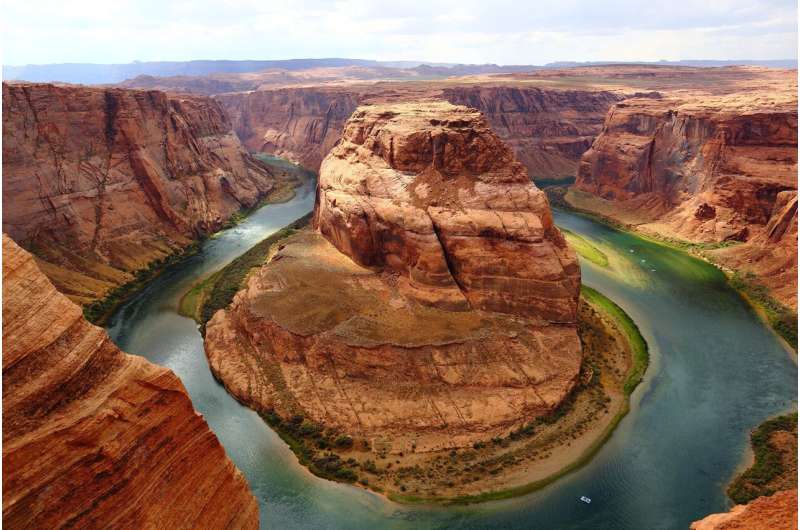This article has been reviewed according to Science X's editorial process and policies. Editors have highlighted the following attributes while ensuring the content's credibility:
fact-checked
reputable news agency
proofread
Don't blame Las Vegas for Colorado River woes

Another study refutes the belief that Las Vegas and other urban centers in the Southwest are sucking Lake Mead dry. Instead, if the region is to adequately address its water problems, policymakers must confront hard questions about the wisdom of farming in the arid Mojave Desert.
Last week, Sustainable Waters released a report on water use and the Colorado River. Contrary to what many people believe, the vast majority of the region's water is used for irrigation to support agricultural interests. Sprawling urban development in Phoenix and Las Vegas isn't the problem.
"Irrigated agriculture," the report found, "consumes about three times the volume of all the cities and industries combined."
Last November, ProPublica reported that about 20 families in California's Imperial Valley "receive fully one-seventh of the river's flow through its lower half—a whopping 1,186,200 acre-feet, or about 386.5 billion gallons." That's more than three states—Wyoming, Nevada and New Mexico—each draws from the river annually.
In California, 80% of the state's Colorado River allocation goes to agriculture.
Addressing this issue is controversial and complicated. It involves water rights that date back more than a century and have been legally adjudicated. Farmers have made great strides when it comes to more efficiently using this precious resource. They have also agreed to cuts at various times. In addition, the Colorado River Compact—the so-called "law of the river"—assumed a river flow that was wildly optimistic, guaranteeing future shortages.
But these facts ignore the question: Does it still make sense to grow alfalfa, cotton and almonds in one of the driest regions on Earth? Simply by turning to less water-intensive crops, California farmers could cut consumption by more than 90 percent, according to a study by UC Santa Barbara and the NASA Jet Propulsion Laboratory.
This isn't feasible for many farmers, but the numbers highlight the extent to which agriculture dominates on the Colorado. And even reforms that don't involve switching to less thirsty crops can make a large difference. The study, the nonpartisan California policy publication CalMatters reports, "found the crop type accounted for only about a third of the variation in Central Valley farmers' water use. Some of the rest was likely driven by farming practices."
Calls for a building moratorium in Southern Nevada to conserve water are understandable yet misguided. The Las Vegas area—thanks to conservation and other efforts—makes due with far less water than it used just a few decades ago despite significant population growth.
The community must continue to make improvements. But stifling future growth would be economically disastrous—and would do nothing to attack the real problem.
2024 Las Vegas Review-Journal. Distributed by Tribune Content Agency, LLC.


















